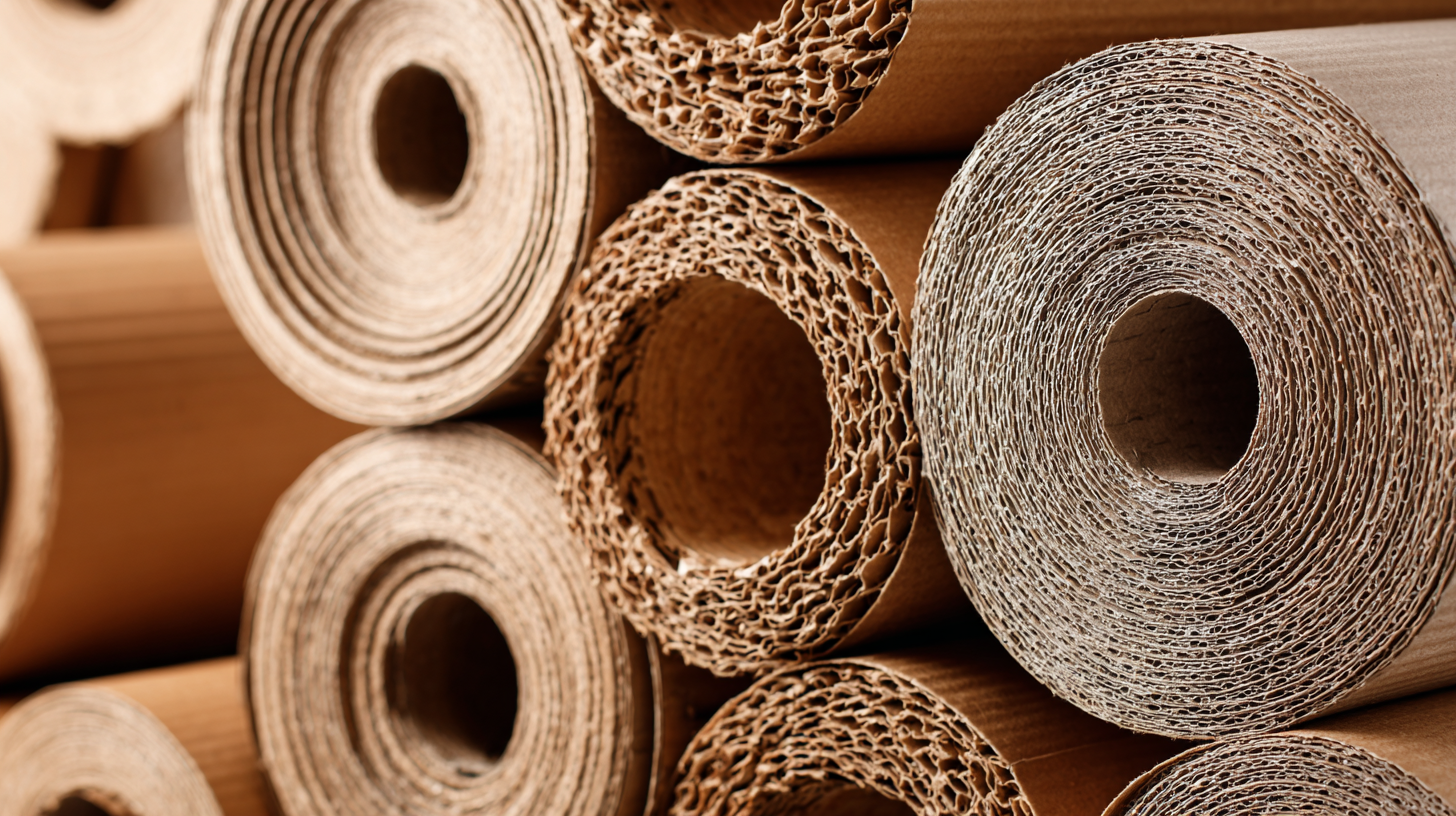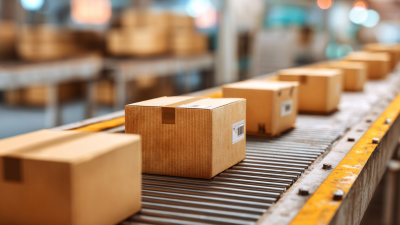How to Efficiently Utilize Cardboard Cores in Packaging Solutions
In recent years, the packaging industry has increasingly recognized the significance of sustainability and resource efficiency, prompting a surge in the utilization of cardboard cores. According to a report by Smithers Pira, the global demand for packaging is projected to reach 500 billion USD by 2025, with a notable shift towards eco-friendly materials.

Cardboard cores, often considered a byproduct of production processes, are being revalued for their ability to enhance the structural integrity of packaging while also reducing waste. These versatile components not only play a crucial role in the design and functionality of various packaging solutions but also contribute to circular economy practices.
As companies strive to meet consumer preferences for greener options and comply with stringent environmental regulations, maximizing the efficient use of cardboard cores is an essential strategy that can drive both profitability and sustainability in the packaging sector.
Identifying Suitable Applications for Cardboard Cores in Packaging
Cardboard cores, often overlooked in packaging solutions, have a variety of suitable applications that enhance efficiency and sustainability. These cylindrical structures are typically used as a support for products like wallpaper, paper rolls, and textiles. Their inherent strength allows them to maintain the shape of packaged goods while providing protection during transit. Companies can benefit from using cardboard cores for bundling multiple items, ensuring organization and minimizing damage due to movement.
In addition to their protective qualities, cardboard cores can be repurposed in creative ways for packaging. For example, they can be used as dividers within boxes to prevent items from shifting, or as spacers to fill empty space and avoid the use of additional packing materials. Furthermore, businesses can leverage customized cardboard cores to enhance brand identity, using printed designs to communicate messages or enhance the unboxing experience. By identifying and implementing these applications, companies not only optimize their packaging processes but also contribute to environmental sustainability through the use of recyclable materials.
How to Efficiently Utilize Cardboard Cores in Packaging Solutions - Identifying Suitable Applications for Cardboard Cores in Packaging
| Application | Core Diameter (mm) | Material Used | Ideal Uses | Environmental Benefits |
|---|---|---|---|---|
| Paper Tubes | 76 | Recycled cardboard | Wrapping papers, textiles | Biodegradable, recyclable |
| Cylindrical Packaging | 150 | Multi-layer cardboard | Food items, cosmetics | Sustainable materials, lightweight |
| Bulk Shipping Containers | 200 | Heavy-duty cardboard | Automotive parts, machinery | Recyclable, reduces carbon footprint |
| Cardboard Sleeves | 50 | Single-wall cardboard | Beverage cans, jars | Lightweight, compostable |
| End Caps | 100 | Recycled fiberboard | Protecting ends of rolled goods | Renewable resources, easy disposal |
Optimizing Design for Maximum Strength and Efficiency in Cardboard Core Structures
When designing packaging solutions using cardboard cores, optimizing their structure for maximum strength and efficiency is crucial. The unique properties of cardboard make it a versatile material, but without careful design, its potential can be underutilized. Focusing on the geometry of the core can significantly enhance its load-bearing capabilities. Integrating features such as tapered ends or reinforcing ribs can help distribute stress more evenly and prevent bending or buckling during handling and transportation.

Tips: Consider the purpose of the packaging when determining the dimensions of the cardboard core. Use engineered designs like hexagonal or triangular cross-sections, which provide superior strength-to-weight ratios. Additionally, choosing the right type of cardboard—ranging from single-wall to double-wall options—can dramatically impact durability depending on the application.
Incorporating innovative adhesives and coatings can also improve the structural integrity and moisture resistance of cardboard cores. By ensuring a good bond between layers and protecting the surface, you can prevent damage from environmental factors. Adopting a modular approach to design will not only maximize the efficiency of production but will also allow for customization based on specific packaging needs.
Integrating Cardboard Cores into Sustainable Packaging Solutions
Integrating cardboard cores into sustainable packaging solutions not only enhances the structural integrity of packaged goods but also significantly reduces environmental impact. Cardboard cores can be utilized to create a robust framework for various packaging types, promoting durability while maintaining a lightweight profile. By substituting traditional plastic or metal components with cardboard, manufacturers can diminish their reliance on non-renewable resources and benefit from a recyclable material that is easier to process at the end of its lifecycle.
Moreover, the versatility of cardboard cores allows for innovative packaging designs that cater to diverse products. For instance, they can be integrated into tubes, trays, or inserts, optimizing space and improving product presentation. This adaptability also encourages brands to explore creative branding options while adhering to eco-friendly practices. As consumers become increasingly aware of sustainability, using cardboard cores not only meets market demand but also aligns with corporate social responsibility goals, making it a strategic choice for businesses committed to reducing their carbon footprint.
Cost-Effective Methods for Sourcing and Recycling Cardboard Cores
Effective utilization of cardboard cores in packaging solutions can significantly contribute to sustainability and cost savings. By sourcing cardboard cores through local suppliers and collaborating with manufacturers, companies can reduce transportation costs and support local economies. These cores can be repurposed or integrated into various packaging formats, helping to minimize waste and optimize resource use.

Recycling cardboard cores is a critical step toward a circular economy in packaging. Organizations can implement take-back programs that encourage businesses to return used cores for recycling. This not only decreases the need for virgin materials but also fosters an environment of responsible consumption and production. Businesses can explore partnerships with recycling companies to ensure that the cardboard cores are processed efficiently, thereby closing the loop on the packaging lifecycle and aligning with broader environmental goals.
Innovative Techniques for Customizing Cardboard Cores in Packaging Designs
Innovative techniques for customizing cardboard cores in packaging designs can vastly enhance product presentation while promoting sustainability. As the demand for eco-friendly packaging continues to rise, companies are exploring ways to incorporate cardboard cores into their designs creatively. These cores can be tailored in size and shape to fit specific products, allowing for efficient use of materials and reducing waste.
To effectively utilize cardboard cores, consider these tips: First, leverage unique shapes—customizing the core’s diameter can influence the overall design of the packaging, enabling better product protection and aesthetics. Second, integrate branding elements directly onto the cardboard itself; using vibrant colors and distinct logos can make the packaging more appealing and improve brand recognition. Lastly, prioritize functionality—design the core to not only hold the product securely but also to facilitate ease of use, ensuring that customers enjoy a seamless experience with the packaging.
Incorporating these innovative techniques not only elevates the product's packaging but also aligns with the growing trend towards sustainable design, which is increasingly important to consumers. Cardboard cores, when customized thoughtfully, can serve as an excellent solution to meet both functional and aesthetic packaging needs.
Related Posts
-

Overcoming Challenges with Carton Tubes: Solutions for Common Issues
-

5 Essential Tips to Maximize Your Sourcing Strategy for Carton Tubes
-

7 Innovative Cardboard Packaging Solutions That Will Transform Your Supply Chain
-

7 Reasons Why Choosing the Right Postal Tube Size Matters
-

What is the Impact of Postal Tubes on Shipping Efficiency? Insights and Trends
-

7 Essential Tips for Choosing the Right Postal Tube Sizes